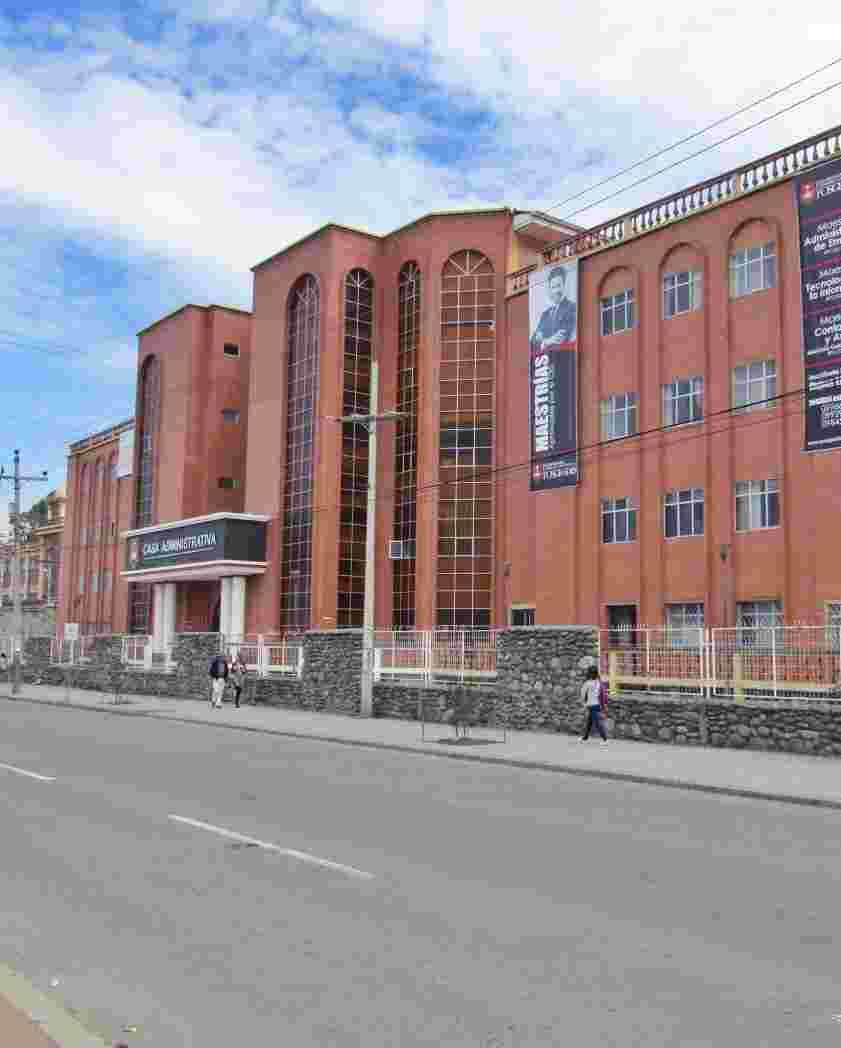Trabajos de Titulación - Bioquímica y Farmacia
URI permanente para esta colecciónhttps://dspace.ucacue.edu.ec/handle/ucacue/27
Examinar
Envíos recientes
Item type: Ítem , Access status: Embargo , Proyecto de Titulación embargado con fines de publicación de impacto(Universidad Católica de Cuenca., 2025) Sarmiento Vélez, José Andrés; Quizhpi Bravo, Wilmer Andrés; Macías Matamoros, Andrea Fernanda; 0106588122; 0106137565Item type: Ítem , Access status: Embargo , Proyecto de Titulación embargado con fines de publicación de impacto(Universidad Católica de Cuenca., 2025) Quizhpi Quito, Bryan Alexander; Criollo Criollo, Ambrosio Sebastián; Verdugo García, Ligia Mercedes; 0106984354; 0106305816Item type: Ítem , Access status: Acceso Abierto , Diseño e implementación de un Laboratorio de Microbiología para el control de Calidad e Inocuidad Alimentaria en la empresa ERBOINDUSTRIAS LTDA(Universidad Católica de Cuenca., 2025) Loja Barzallo , Johanna Verónica; Vega Chérrez, Dayanna Lizbeth; Guillermo Quinde, Juan Israel; 0106817109; 0750880189Introduction: Erboindustrias Cía. Ltda., founded in 1970 in Misicata, Cuenca, produces food derived from cereals, highlighting the brand "Tapiorica," a nutritious tapioca drink. With quality and innovation as is cornerstones, the company has consolidated its national and international presence. Faced with high external analysis costs, the company proposed an in-house microbiology laboratory to optimize control, reduce expenses, and ensure food safety. Objective: To design a microbiology laboratory at ERBOINDUSTRIAS LTDA to ensure quality control and food safety through standardized microbiological analyses. Methodology: A qualitative, descriptive, and cross-sectional study was conducted for the development of this thesis. Results: The analysis demonstrated that an in-house microbiology laboratory reduces costs and time compared to external laboratories. The necessary equipment, supplies, and culture media were defined, ensuring operational feasibility, compliance with safety and quality standards, and an improvement in product control. Conclusion: The design of the microbiology laboratory for ERBOINDUSTRIAS LTDA. was developed and approved by management. Its implementation will enable the company to optimize processes, reduce operating costs, ensure food safety, and strengthen the competitiveness and quality of its productsItem type: Ítem , Access status: Embargo , Proyecto de Titulación embargado con fines de publicación de impacto(Universidad Católica de Cuenca., 2025) Santander Carrasco, Gabriel Andres; Rivera Tuba, Jonathan Xavier; 0750998114Item type: Ítem , Access status: Embargo , Proyecto de Titulación embargado con fines de publicación de impacto(Universidad Católica de Cuenca., 2025) Cabrera Macas, Jean Andres; Araujo Campoverde, María Viviana; 1900740604Item type: Ítem , Access status: Embargo , Proyecto de Titulación embargado con fines de publicación de impacto(Universidad Católica de Cuenca., 2025) Campos Zambrano , Fernanda Valentina; Cabascango Guaita, Paola Alexandra; Macías Matamoros, Andrea Fernanda; 0953383304; 1718552563Item type: Ítem , Access status: Embargo , Proyecto de Titulación embargado con fines de publicación de impacto(Universidad Católica de Cuenca., 2025) Durán Cabrera, Leslie Pierina; Heras Paccha, Jennifer Alexandra; Bravo Crespo, David Israel; 0105750459; 0106151996Item type: Ítem , Access status: Embargo , Proyecto de Titulación embargado con fines de publicación de impacto(Universidad Católica de Cuenca., 2025) Carmona Duran, Anthony Gabriel ; Escalante Valverde, Emily Estefanía; Ortiz Tejedor, Jonnathan Gerardo; 0150302610; 0150046894Item type: Ítem , Access status: Embargo , Proyecto de Titulación embargado con fines de publicación de impacto(Universidad Católica de Cuenca., 2025) Barahona Urdiales, Alicia Isabel; Bermeo Parra, Tania Elizabeth; Araujo Campoverde, María Viviana; 0107547572; 0107558702Item type: Ítem , Access status: Embargo , Proyecto de Titulación embargado con fines de publicación de impacto(Universidad Católica de Cuenca., 2025) Quezada Espinoza, Mateo Santiago; Dután Rojas , Mateo Alejandro; Guamán Sánchez, María Fernanda; 0150373074; 0107542805Item type: Ítem , Access status: Embargo , Proyecto de Titulación embargado con fines de publicación de impacto(Universidad Católica de Cuenca., 2025) Hernández Abad , Jonny Alejandro; Velasco Barahona, Daniel Alejandro; Guamán Sánchez, María Fernanda; 1104827181; 0302187026Item type: Ítem , Access status: Embargo , Proyecto de Titulación embargado con fines de publicación de impacto(Universidad Católica de Cuenca., 2025) Vicente Guerrero, Brandon Santiago; Rivera Tuba, Jonathan Xavier; 1105892317Item type: Ítem , Access status: Embargo , Proyecto de Titulación embargado con fines de publicación de impacto(Universidad Católica de Cuenca., 2025) Murudumbay Campoverde, Karlina; Verdugo García, Ligia Mercedes; 0302078787Item type: Ítem , Access status: Embargo , Proyecto de Titulación embargado con fines de publicación de impacto(Universidad Católica de Cuenca., 2025) Astudillo González , Mateo David; Puglla Barros, Edgar David; Ortiz Tejedor, Jonnathan Gerardo; 0105733224; 0107145666Item type: Ítem , Access status: Embargo , Proyecto de Titulación embargado con fines de publicación de impacto(Universidad Católica de Cuenca., 2025) Cazorla Ocaña, Denis Sebastián; Flores García, Mónica Susana; 1004470652Item type: Ítem , Access status: Embargo , Proyecto de Titulación embargado con fines de publicación de impacto(Universidad Católica de Cuenca., 2025) Criollo Cabrera , Samantha Michelle; Cueva Cueva, María del Carmen; Guamán Sánchez, María Fernanda; 0106497092; 1723442305Item type: Ítem , Access status: Embargo , Proyecto de Titulación embargado con fines de publicación de impacto(Universidad Católica de Cuenca., 2025) Loja Balbuca , Christian Martin; Vele Cárdenas , Paola Estefanía; Macías Matamoros , Christian Martin; 0106192552; 0107785107Item type: Ítem , Access status: Embargo , Proyecto de Titulación embargado con fines de publicación de impacto(Universidad Católica de Cuenca., 2025) Figueroa Duran, Ángela Fernanda; Macías Matamoros, Andrea Fernanda; 0105937130Item type: Ítem , Access status: Embargo , Proyecto de Titulación embargado con fines de publicación de impacto(Universidad Católica de Cuenca., 2025) Rodas Martínez, Joseline Maricela; Ortiz Tejedor, Jonnathan Gerardo; 0106638810Item type: Ítem , Access status: Embargo , Proyecto de Titulación embargado con fines de publicación de impacto(Universidad Católica de Cuenca., 2025) Gaibor Vásquez, María José; Pacheco Campoverde, Kelly Salome; Yarzábal Rodríguez, Luis Andrés; 0107404261; 0106396328




